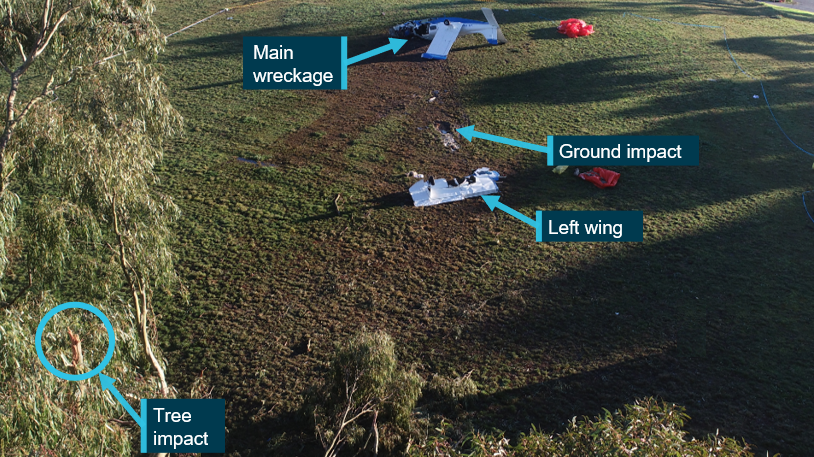Forced Landing & Collision After Engine Power Loss in Melbourne’s Southeast: ATSB

On June 22, 2021, the pilot of a PA-32-200 Cherokee Six was conducting circuits at Moorabbin Airport, in Melbourne’s southeast, prior to engine power loss, as reported by ATSB (Australian Transport Safety Bureau).
As the aircraft was climbing after takeoff at about 500 ft. above ground level, fuel flow to the engine significantly reduced. Within 12 seconds, the aircraft suffered engine power loss and commenced descending.
In response, the pilot targeted a glide speed of 90 kt and searched for a site to make a forced landing within a 30° arc either side of the aircraft’s nose. He then identified one of few clear areas available for a landing within gliding range and maneuvered the aircraft toward that area.

A Piper Cherokee Six light aircraft’s forced landing and collision with terrain following engine power loss soon after takeoff from Moorabbin Airport highlights the challenges pilots face when they experience an engine failure or power loss at low level, an ATSB investigation notes.
As the aircraft approached the selected area, the pilot recognized that insufficient height remained to clear trees and also that contact was unavoidable.
The aircraft impacted the trees before colliding with the ground. The pilot sustained serious injuries in the accident and the aircraft was destroyed.
“This accident highlights the challenges pilots face when confronted with engine power loss at low level and with few suitable forced landing areas within the glide capability of the aircraft,” observed ATSB Director Transport Safety Stuart Macleod.
“It reaffirms to pilots that they can best mitigate the effects of an engine power loss through forward planning, which reduces mental workload under stress, and always maintaining control of the aircraft.”
Maintaining glide speed and using no more than a moderate bank angle avoids entering a stall and/or spin, Mr. Macleod noted.
“During a forced landing, aim to arrive at the ground with wings level and the aircraft level with the ground, as this improves your prospects of survivability,” he said.
The ATSB’s investigation determined that a significant reduction in fuel flow, for reasons that could not be determined despite extensive examination, resulted in the engine’s loss of power
Analysis of the engine’s data management system showed that after the power loss, fuel flow did not reduce to zero, but varied between 20 and 16 liters/hour (in conjunction with RPM changes), indicating that fuel starvation did not lead to the power loss.
Further, wreckage examination, flight records and witness reports indicated that there was sufficient fuel on board, and in any tank, to power the engine.
While damage limited examination of the fuel system, no defect was identified that could have led to the fuel flow reduction. The engine was dismantled, examined, and all fuel system components were tested and found to function correctly.
The investigation also found that the aircraft was inadvertently fitted with an incorrect engine variant, however, this did not affect the operation of the aircraft or contribute to the power loss.
“This inadvertent fitment, while not contributing to the accident, does underline to maintenance organizations the importance of the correct interpretation of the manufacturer’s type certificate documentation.”
Read the report: AO-2021-024: Engine power loss and collision with terrain involving Piper PA 32 300, VH-CWK near Moorabbin Airport, Victoria on June 22, 2021.
Source for content and image: ATSB, Australian Transport Safety Bureau, “Forced landing and collision with terrain following engine power loss,” published Sept. 14, 2022.



